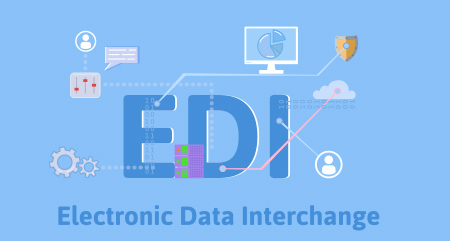eNews October 3, 2019
In the News
October 3, 2019
September Credit Managers’ Index Disappoints
—Michael Miller, managing editor
NACM’s Credit Managers’ Index (CMI) faltered a bit in September after a robust showing the previous month. “That gain was short-lived as this month there was a bit of a decline. The data is still pretty firmly in the expansion zone, but not as robustly as was the case earlier,” said NACM Economist Chris Kuehl, Ph.D.
The combined CMI slipped from 55.2 in August to 54.1 in September. “The numbers are not as good as they were in August, but they have hardly fallen off the map,” Kuehl said of the favorable categories. All four favorables—sales, new credit applications, dollar collections and amount of credit extended—declined below the 60 mark. Sales was hit the hardest slipping more than 10 points from September 2018 and nearly six points month-to-month. Overall, the favorable factors dropped roughly three points from August. Meanwhile, the unfavorables only declined two-tenths of a point and remained in expansion territory (a score over 50). Disputes, dollar amount of customer deductions and filings for bankruptcies all improved in September. “[Dollar amount beyond terms] is [worrisome] in that slow pays are the first sign of future problems,” Kuehl added.
Manufacturing was hampered by setbacks in both the favorables and unfavorables. The index saw its overall reading dip more than a point. “The sense is that trends will be more negative as the trade war grinds on and more tariffs come into play,” Kuehl said. Again, sales pulled the sector’s index down substantially YoY and MoM, while the other three categories only stepped back modestly. Once more, Kuehl mentioned slow pays as an issue, “and thus far there are a few major alarms sounding.” The unfavorables dropped half a point and stayed in the expansion zone.
The service sector also had signs of weakness; however, the unfavorables improved by a tenth of a point. Filings for bankruptcies improved slightly in September. “The success of the retail season will determine whether there will be more bankruptcies toward the beginning of next year,” Kuehl noted. Dollar amount beyond terms dipped below the teetering point and entered contraction territory (scores below 50). “The retail sales numbers will climb, but the question will be by how much and for how long,” Kuehl said. “If the season is not quite what had been expected, the nonfavorable factors will likely show the strain—perhaps even experiencing a hike in bankruptcies in the retail community. The other service category that shows strong influence over the CMI is construction. This area may decline simply due to seasonal factors.”
While much of the decline in September is due to the lack of sales and favorable factors lagging in all three indices, data is still quite strong and above the lull that was seen in July. “The data this month was slightly less impressive than last month, but the declines were not steep,” Kuehl said. “The exception was that sales numbers tanked, and that worries analysts down the road.”

Registration Opens Next Week
The National Association of Credit Management will hold its 124th Credit Congress & Exposition at Caesars Palace in Las Vegas, Nevada, from June 14-17, 2020. ;This is a one of a kind opportunity for you and more than a thousand business credit and financial management professionals to gather and share experiences, learn from experts and one another and remember why what you do matters!
Please visit creditcongress.nacm.org for more information. We will continue to update the site with additional information on sessions, speakers, exhibitors and much more.
Please visit creditcongress.nacm.org for more information. We will continue to update the site with additional information on sessions, speakers, exhibitors and much more.
Technology in Construction Credit: Slow to Implement
—Christie Citranglo, editorial associate
Business-to-business (B2B) credit can sometimes fall behind the times when it comes to payment methods, contract signatures, mediums of communication, etc. Each industry within credit advances at its own pace, and according to recent data from Jobsite, construction B2B remains behind on technological advancements: only agriculture and hunting invest less in B2B software than construction. The advancement gap is even wider for small- to medium-sized businesses (SMBs).
Despite the advantages to implementing payment software and the continued growth of construction-industry software, many companies still resist the change. Overhead costs continue to be a main reason for slower adoption, especially for smaller construction companies.
According to Jobsite, making the decision to invest in IT does not come easily to SMBs, especially for enterprises run by only a handful of employees. The cost to invest on paper may be too great for SMBs; the same concerns extend to large companies. CFOs and board members of big companies may deem IT too expensive as well, especially given increasingly tighter margins in the construction industry.
“‘Silo’ mentality can also interfere, particularly in large multi-disciplinary businesses—a keenly felt need for new software in one division may not be echoed across the company,” the study states. “And the conservative and risk-averse attitudes of many seasoned construction people can also slow adoption.”
Construction credit—unlike industries such as wholesale and retail—has more complications within the nature of the industry. Mechanic’s liens and bonds, lessors of movables and leasehold liens play roles in assuring a creditor gets paid, and keeping laws straight along with collecting on past due accounts can be eased with the use of technology in the credit department. According to the National Association of Purchasing Card Professionals, with just the use of a purchasing card in the credit department, creditors can save up to 80% per transaction.
When customers use a type of digital payment, days sales outstanding (DSO) can drop significantly. Payments will clear sooner, merely by giving customers the option to pay electronically: the money will clear sooner than writing a check, mailing the check, waiting a few days for the post to catch up, taking the check to the bank and finally waiting for the check to clear.
“The consumerization of technology has also had an effect. At one time, you went to work so that you could use the latest software and hardware. Nowadays, we often have more powerful applications on our personal smartphones and tablets than we have in our offices or on jobsites,” the study from Jobsite notes. “Nevertheless, resistance to new technologies can be overcome.”

Don’t miss NACM’s first app-only issue of Business Credit magazine coming October 15!
Everyone at an NACM member location can download the FREE Business Credit app. Find the app on the Apple App store or Google Play store.
Everyone at an NACM member location can download the FREE Business Credit app. Find the app on the Apple App store or Google Play store.
Watch for exclusive app-only special offers!
EDI Invoicing Takes Pressure Off Credit Managers
—Andrew Michaels, editorial associate
For most credit managers, it’s nearly impossible to go an entire workday without at least hearing about customer invoices. Whether the bill is late or on time, incorrect or just right, invoices generally cross credit managers’ paths in some manner. Invoicing has now become part of the business credit digitization effort, not only to ease credit managers’ involvement, but also overall invoice management.
Electronic Data Interchange (EDI) is a perfect example of the technological transformation currently underway in the credit department. According to Union Pacific (UP), the definition is in the name; EDI is an electronic exchange of data. Although it has been around for the past few decades, EDI is new to business credit, particularly invoicing, because it shifts from the paper-centric methods of communication, e.g., printing and mailing invoices only to manually enter the data into the computer upon its return. UP refers to paper invoices as the “traditional document exchange.”
“The entire process is nothing more than the transfer of information from the seller’s computer to the customer’s computer,” UP states on its website. “EDI makes it possible to minimize or even eliminate the manual steps involved in this transfer.”
Whereas paper invoices can take between three and five days to process, EDI invoices can process overnight and take less than an hour to complete. From there, UP states, the process is as follows:
- EDI software creates an electronic version of the purchase order and transmits it automatically to the supplier.
- Supplier’s order entry system receives the purchase order and updates the system immediately on receipt.
- Supplier’s order entry system creates an acknowledgment and transmits it back to confirm receipt.
At Sumitomo Electric Lightwave, Director of Credit Chris Finch said 99% of the company’s invoices are sent via email or EDI, which is “a huge help” with purchase orders. Invoices are typically handled by an accounting analyst but will involve a technician for EDI setup and skipped invoices or customer service if freight or lines don’t match. Finch said EDI allows him to focus on other tasks, only requiring his assistance if there’s an issue or amounts don’t match what’s on the purchase order.
“We no longer mail any invoices via snail mail,” Finch said. “Our system automatically generates the invoice. More and more customers require invoices to be uploaded into their web portal, which takes longer depending on how their portal is set up, if there’s already a purchase order in the portal to invoice against, if the invoice matches the purchase order, do they allow multiple invoices to be uploaded at one time, or do they require only one invoice to be uploaded at a time.”
From his perspective, customers are adding this requirement and shifting their entire accounts payable functions to suppliers. If check writing privileges ever come to fruition, Finch added, companies will handle all sides of the accounts payable process. The future is uncertain.
“We don’t presently use anything else other than EDI invoicing due to the low number of invoices we produce today; most aren’t cost effective right now,” Finch said. “That could always change.”

Prepare for the November 4th Test Date
CBA, CBF & CCE Designation Exam Review Courses—Available Now!
$99/members
Visit the Credit Learning Center (CLC) or contact the NACM Education Department at This email address is being protected from spambots. You need JavaScript enabled to view it. or 410-740-5560 to learn more.
Visit the Credit Learning Center (CLC) or contact the NACM Education Department at This email address is being protected from spambots. You need JavaScript enabled to view it. or 410-740-5560 to learn more.
Watch for exclusive app-only special offers!
Debtor’s Ongoing Use Did Not Make Former Name Sufficient for Financing Statement
—Paul Hodnefield, Esq.
Secured parties are generally solely responsible for providing the correct debtor name when filing a UCC financing statement. Failure to conduct thorough debtor name due diligence may inadvertently lead to filing under an incorrect debtor name, even when appearances suggest the name was correct. The effect of such an error was recently demonstrated in the case of In re Wastetech, LLC, 2019 Bankr. LEXIS 1713 (Bankr. N.D. Ga. May 31, 2019).
Between June and September 2017, NTC Waste Group, LLC (the “Debtor”) entered into a series of Purchase and Sale of Future Receivables Agreements (the “Agreements”) with Silverline Services, Inc. (the “Secured Party”). In each of the Agreements, the Debtor granted the Secured Party a security interest in a substantial portion of its assets to secure the performance of its obligations under those agreements.
On July 7, 2017, after the relationship began but before the Secured Party perfected its security interest, the Debtor filed a Certificate of Amendment with the secretary of state to change its name. The amendment changed the Debtor’s name from NTC Waste Group, LLC to Wastetech, LLC. Despite the name change, the Debtor continued to operate under its former name and it never notified the Secured Party of the name change.
The Secured Party filed a financing statement on November 14, 2017 to perfect its security interest in the Debtor’s assets. However, the name provided for the Debtor on the financing statement was NTC Waste Group, LLC, not Wastetech, LLC.
Just a few months later, on February 13, 2018, the Debtor filed for bankruptcy and a Trustee was promptly appointed. The Trustee brought an adversary action against the Secured Party seeking avoid the security interest because the financing statement failed to provide the correct name of the debtor. The Trustee then moved for summary judgment on its claim.
In opposition to the motion, the Secured Party argued that it did not knowingly or intentionally list the incorrect Debtor name on the financing statement. It was simply not aware of the name change. The Secured Party and Debtor began their relationship before the name change and the Debtor continued to operate the business under its former name. As a result, the Secured Party argued that the Debtor’s conduct created the misleading impression that the Secured Party could file under the Debtor’s former name.
The Secured Party further argued that there was a strong relationship between the former Debtor name and the current Debtor name. A search of the secretary of state business records on one name would disclose the other.
The court was not persuaded and noted that all of the Secured Party’s arguments were irrelevant. It didn’t matter whether the Secured Party would have been confused by the Debtor carrying on business under the former name or whether the former and current name were associated in the state business records. What mattered was whether the financing statement provided the correct name of the debtor and, if not, whether the financing statement would be disclosed by a search of the correct debtor name using the jurisdiction’s standard search logic and provided in the Georgia version of UCC § 9-506(c).
In this case, the financing statement failed to provide the correct name of the Debtor. The Trustee also presented sufficient evidence to demonstrate that a search conducted in accordance with UCC § 9-506(c) failed to disclose the financing statement. Consequently, the court found that the financing statement was ineffective and granted summary judgment in favor of the Trustee.
The important thing to take away from this case is that there is no substitute for due diligence. The UCC filing system is designed to protect third parties who search the records, not the secured party or debtor. As the beneficiary of the security interest, the secured party is solely responsible under Article 9 for strict compliance with the applicable debtor name requirements. A secured party cannot safely rely on the debtor’s representations as to its correct name. Nor may the secured party rely on any source for the debtor name other than the source specified in UCC § 9-503(a) for the particular type of debtor. In this case, the Secured Party could have protected itself by checking the public organic record for the correct name during the financing statement preparation process. Instead, the Secured Party relied on other information and, as a result, suffered the consequences of filing under the incorrect debtor name.
Reprinted with permission.
Paul Hodnefield, Esq., is associate general counsel for CSC®, where he is responsible for advising the company regarding UCC, real estate recording, notary and other public record transactional services. He also currently serves as co-chair of the ABA Joint Task Force on Filing Office Operations and Search Logic. He is a frequent speaker on public record filing, recording and search issues and has participated as a panelist in numerous CLE programs for the ABA, state bar associations and several other organizations.

Get Your Freshly Investigated Credit Report—Tomorrow
Order what you need, when you need it, with FCIB Next-Business-Day Credit Reports.
FCIB offers a quicker delivery speed for credit reports in more than 60 countries. Our next-business-day credit reports are freshly investigated, concise and cost-effective without the expense of a high-volume contract.
Get the business and credit details to set credit limits quickly, including:
- Key corporate facts from the local registry
- A robust predictive credit risk rating
- Maximum credit recommendation
- The latest filed financial statements
To learn more, please contact Tina Mansfield at +410-423-1840 or This email address is being protected from spambots. You need JavaScript enabled to view it..



